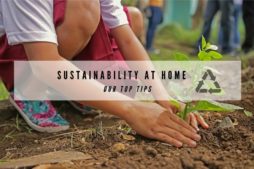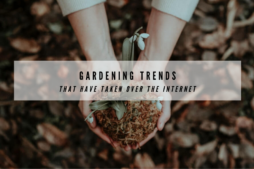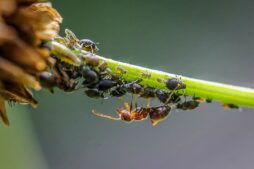During times of drought or seemingly endless weather shifts, gardening can feel like an impossible and sometimes selfish hobby. However, with an eco friendly garden, it doesn’t have to be that way. With this sustainable, eco friendly approach, you can play a key role in mitigating climate change while simultaneously supporting local wildlife.
In this article, we’ll take a look at the steps you can take to create a more eco friendly garden. We’ll also discuss the benefits you’ll reap from adopting this approach.
1. Re-wild Your Garden

As a gardener, re-wilding essentially means you’re working to restore the natural ecosystem and encouraging the return of biodiversity. With this method of gardening, nature is allowed to run its course as you, the gardener, take a bit of a back seat. Don’t worry, this doesn’t mean sacrificing on style or curb appeal.
The idea of rewilding dates back to the 80s, thanks to UK naturalist Chris Baines. Initially, Baines encouraged this practice for large swaths of land such as parks and open spaces. However, in more recent times the term re-wilding has been adopted for smaller gardens as well.
Did you know the State of Nature Report has a list ranking cities from least to most nature poor? Unfortunately, the UK is ranked number 189 out of 218 nations. This dismal news has prompted many landowners to pledge to stop using herbicides and pesticides and allow nature to heal itself. With the absence of these chemicals, insects, birds, and other wildlife are returning and beginning to thrive once more. Each of these creatures plays a beautiful role in a functioning ecosystem.
2. Let Your Lawn Go
At the end of the gardening season, it’s common practice to prep for winter by cleaning fallen leaves and trimming the hedges. This year as a way of rewilding and fuelling your ecosystem, consider letting these chores lapse.
If the thought of leaves strewn about the lawn drives you crazy, perhaps rake them to a corner of your yard and allow them to sit rather than bagging and disposing of them. Similarly, with chopped logs or fallen branches, consider stacking them somewhere in the garden. Please note, when it comes to wood piles, we suggest keeping them a fair distance away from your home since they make an excellent home for insects.
These new tenants thriving in the leaves and wood, are fantastic for your gardening efforts and will consume other pests. For instance, the aptly named woodlouse spider thrives in wood piles and feast on pesky woodlice. In addition, ground beetles also take up refuge in wood piles. These creatures live off of slugs, ants, and mites.
An important part of rewilding gardens, don’t shoot the messenger, is allowing weeds to grow. Most gardeners would shudder at the thought. Weeds are typically viewed as a nuisance, but in all actuality, they’re technically native plants. They’re nutrient-dense and highly sought after by local wildlife.
Along with allowing weeds to grow, consider planting native wildflowers in your yard. Wildflowers are often quite hearty. As native plants, they need very little water to thrive and produce a variety of beautifully vivid flowers. The blooms then support the pollinators who are currently going extinct. Native wildflowers are much healthier than imported flowers and provide more nutritious pollen to the bees.
3. Use Natural Materials

While we touched on this a bit already, your eco friendly garden can’t thrive without abandoning man-made materials such as fertilizers. Mulching delivers the same benefits and comes without the chemical health risks.
Mulching is multi-purposeful. Not only does it act as fertilizer, but it also aids in water retention. This is ideal for locations with drier climates or areas experiencing drought. Water seeps down below the mulch, which then acts as a barrier preventing evaporation. As soon as the first signs of autumn appear in your area, we highly recommend spreading a fresh layer of mulch. Once the temperature begins to drop, mulch acts as an important insulator by trapping heat. This prevents root systems from freezing in the winter months.
Mulch comes in many forms, not just the wood chips you’re probably envisioning. Other forms of mulch include:
- Leaf Mould
- Compost
- Mushroom Compost
- Straw
- Cocoa shells
As for other natural materials, consider sourcing local when searching for building supplies. Whether you’re building a patio, pergola or paving a path, purchasing local natural supplies will both support your local economy and decrease your carbon footprint. However, before purchasing natural and local building supplies, it’s important to know there could be a higher cost involved. A specialist with knowledge of the natural materials might be needed for building and installation. Decide on a budget and be sure to check with local craftsmen for an estimate ahead of time. The same goes for garden furniture – shop local, or buy long-lasting furniture made with natural materials, Like our mosaic bistro tables.
4. Repurpose Old Furniture
While it’s undoubtedly fun to shop around and purchase new furniture, it’s neither cost-effective nor eco friendly. Instead, opt for a good ol’ fashioned DIY project and give your pre-existing furniture some tender love and care.
Wooden seating is easily restored with sandpaper, stain, and a protective weather-resistant topcoat. Items such as old barrels can be repurposed into planters or seating. Outgrown childhood swing sets can be taken apart and given new life by reusing the lumber in another project.
If you don’t have the time to put into refurbishing, consider donating your current furniture and finding replacements at a local thrift shop.
5. Collect Rainwater
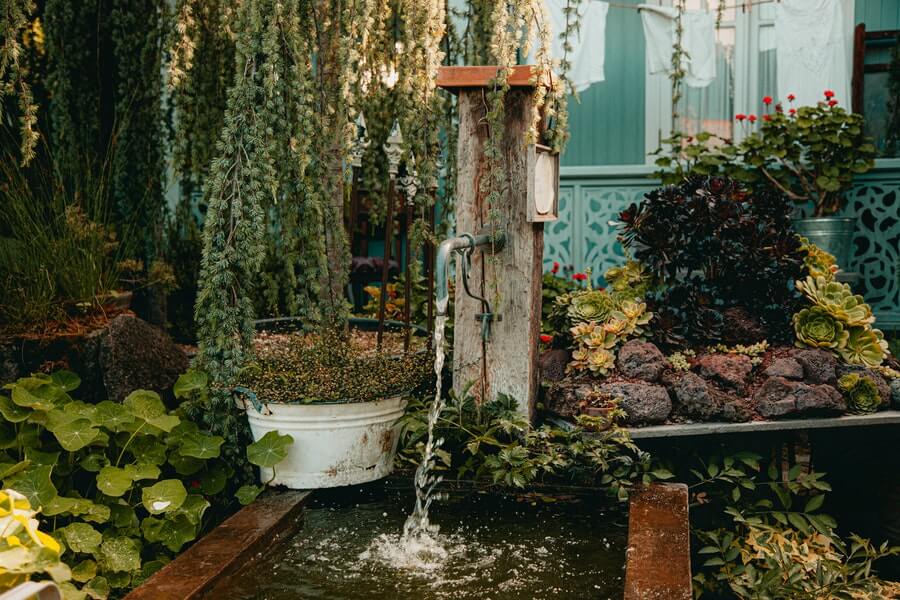
Rainwater is a free resource to be collected. Place water butts beneath the downpipes around to funnel in the rainfall. Larger properties can consider installing a rain water tank beneath the ground, which can then also be used in the home as well.
6. Say No to Pesticides
Harsh chemicals are never the answer as we mentioned above, instead, employ cleaner methods such as natural pest control and companion planting.
Natural Pest Control
With natural pest control, there are many remedies for varying pests. As a general catch-all preventative method, purchase a gardening mesh to place over plants. This blocks pests from approaching them. However, if you’d rather not cover your plants, there are other alternatives like copper slug rings, which prevent slugs from climbing up plants.
Companion Planting
Companion planting is a strategic method for keeping pests away. An example would be planting marigolds next to tomatoes. The odor from the marigolds keeps aphids away from the tomatoes. Many plants work in conjunction with one another to naturally prevent pests as well disease. Carrots and leaks are another great example. When grown together, they naturally repel each other’s pests. When considering companion planting, research growing seasons. Different plants thrive in different months and seasons.
7. Welcome in Wildlife – Increase Biodiversity
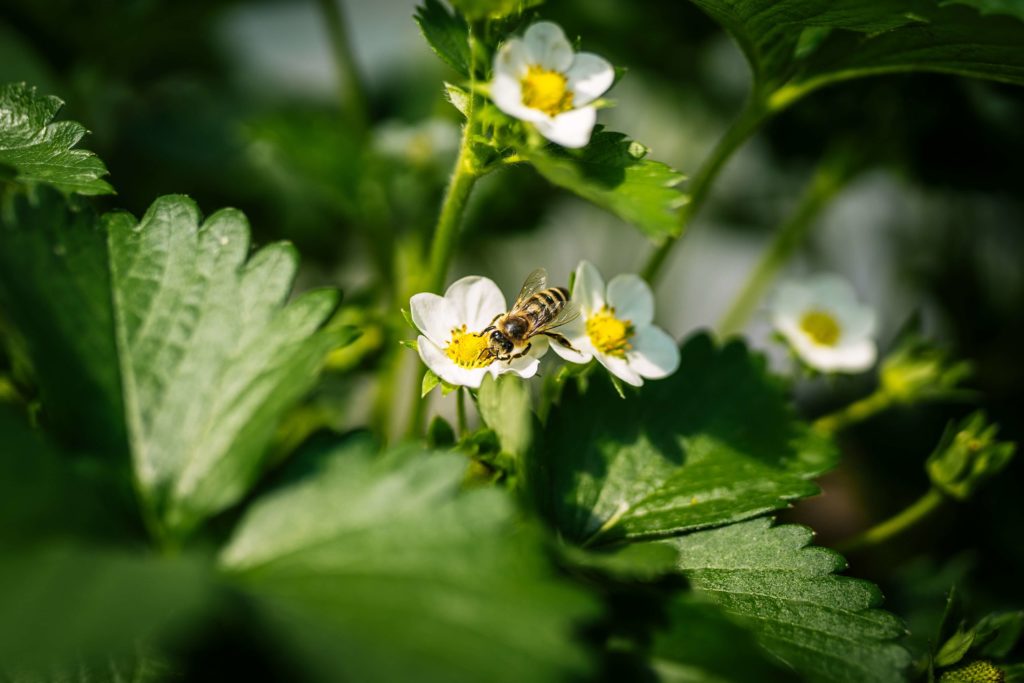
Believe it or not, restoring the balance and allowing insects and wildlife to return to your garden will mean fewer pests. Natural predators will take care of the issue. With a biodiverse habitat, no single species is dominant because nature balances itself out. So rather than immediately eliminating the first signs of bugs, allow the birds to swoop in and handle the issue. You can encourage birds to frequent your garden with a bird feeder and nest boxes.
If your garden has hard fencing, consider creating small openings to allow hedgehogs and other small animals easy passage. Resident hedgehogs are a hot commodity and keep worm and slug populations in check.
8. Composting is King
Compost is a natural fertilizer and costs nothing to make. Many households keep composting containers in their home to quickly dispose of food scraps. Once the container is full, the contents are then transported to the garden.
When it comes to compost, you can include: fruit and vegetable peelings, tea bags, leaves, lawn clippings, shredded newspaper and cardboard. The key to composting food scraps, is that they must be raw and cannot contain meat or dairy.
9. Improve Drainage with Permeable Paving
Did you know concrete driveways are one of the largest contributors to water waste? Rainwater and runoff from sprinklers trickle down the cement causing localized flooding.
This has become such a problem that future plans to build impenetrable concrete driveways over 5m2 will now need planning permission to be built. The only way around this is to demonstrate that your driveway drains directly into a gardening bed.
Concrete also absorbs heat and can contribute to heating up the surface area surrounding your home. This is why cities with very little plant life and a great deal of concrete are often much warmer than rural areas. In order to mitigate these issues, consider utilising permeable paving, which can come in the form of gravel, porous asphalt, or slate chipping.
Creating Your Eco Friendly Garden
All in all, don’t feel as if you need to accomplish all of these things overnight. Many people take years to fully figure out their eco friendly garden. The important thing is that steps are being taken in that direction. Mother Nature will thank you, as will the plants and animals who will thrive in your garden. And who knows, you might inspire your neighbours to take on the mission as well.
Sources
https://en-academic.com/dic.nsf/enwiki/1227837 https://www.rspb.org.uk/our-work/state-of-nature-report/ https://www.woodlandtrust.org.uk/trees-woods-and-wildlife/animals/spiders-and-harvestmen/ woodlouse-spider/ https://www.coleoptera.org.uk/carabidae/ home https://www.rhs.org.uk/soil-composts-mulches/mulch https://www.rhs.org.uk/soil-composts-mulches/compostingDo I Need Planning Permission For a New Driveway?
Ryan Jenkins is a professional gardener and has been working in the gardening industry for over 25 years. This has allowed Ryan to accumulate a vast wealth of gardening knowledge which he shares on the Sefton Meadows blog.

